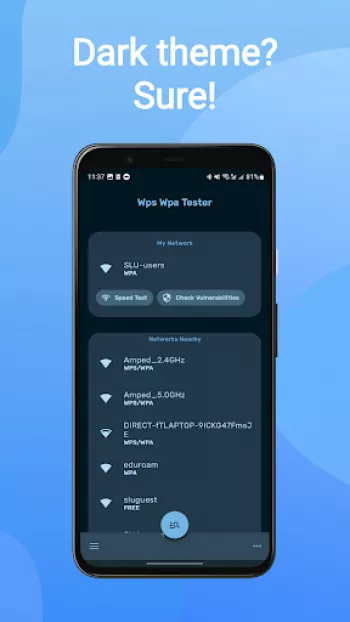Apps Home

Understanding the Complexities of Wi-Fi Networks
Wi-Fi networks have become an integral part of our daily lives, providing us seamless access to the internet for both personal and professional use. But understanding the complexities of these networks is crucial to optimizing their performance and ensuring robust security. A Wi-Fi network is essentially a wireless local area network (WLAN) that uses radio signals to provide high-speed internet access to compatible devices. These networks function on technologies such as IEEE 802.11, encompassing various frequency bands and standards like 802.11a, 802.11b, 802.11g, 802.11n, and the modern 802.11ac and 802.11ax, each offering different levels of speed and range. For a layman, the complexity often begins with choosing the right channel, frequency, or even deciphering the myriad of network protocols. In crowded urban environments, the radio signals from multiple Wi-Fi networks can interfere with one another, leading to what's known as co-channel and adjacent channel interference. Choosing a less congested channel can improve performance significantly, yet this requires understanding how to access and interpret your router’s administrative settings. Moreover, the setup of devices in a network impacts its function—placement of the router, proximity of devices, physical obstructions, and even electromagnetic interference from household items can affect signal strength. This is where the role of a Wi-Fi Network Analyzer becomes indispensable; it helps visualize the network environment, showing which channels are congested and suggesting optimal settings for improved performance. Moreover, the architecture of these networks needs to be sustainable—infrastructure must support an ever-growing number of devices fighting for bandwidth, including IoT devices, each contributing to the complexity. Therefore, a comprehensive understanding requires not just theoretical knowledge, but also practical insights into managing these networks through advanced tools that aid in monitoring and troubleshooting.
Security Vulnerabilities in Wi-Fi Networks
The widespread use of Wi-Fi networks has been coupled with increasing security vulnerabilities, making it imperative for users to comprehend the risks involved and the necessary measures to mitigate them. WPS (Wi-Fi Protected Setup) and WPA (Wi-Fi Protected Access) are commonly employed security protocols in Wi-Fi networks. However, each has its set of vulnerabilities. WPS, often aimed at simplifying the setup of secure home networks, is infamously susceptible to brute force attacks due to its eight-digit PIN structure. Attackers can exploit this vulnerability to gain unauthorized access to the network. Likewise, WPA, particularly the WPA2 version, albeit more secure than its predecessors, is not invincible. It's vulnerable to several attack vectors, including the KRACK (Key Reinstallation Attack), which allows adversaries to intercept and potentially manipulate traffic flowing over the network. Furthermore, Wi-Fi networks are always at risk from LAN security loopholes. Unprotected LAN segments can serve as entry points for malicious actors, who once inside, may exploit other devices connected to the network. Understanding these vulnerabilities transcends basic password protection. It involves monitoring network traffic for anomalies, employing encryption mechanisms like AES (Advanced Encryption Standard) over TKIP (Temporal Key Integrity Protocol), deploying firewalls, and regularly updating your router firmware to patch known vulnerabilities. The role of network analyzers is crucial here, as they not only detect potential threats but also suggest specific actions to bolster network security. For instance, they simulate WPS PIN attacks to test a router's resilience. The goal is to educate users on the potential weaknesses of their unique network setups and provide them with the means to reinforce their digital perimeters actively.
Wi-Fi Network Performance Optimization
Optimizing Wi-Fi network performance is not a one-time task but rather an ongoing process that requires a good grasp of several technical variables and a keen eye for identifying bottlenecks. The speed and health of your Wi-Fi network can be influenced by factors such as the bandwidth capabilities of your router, the internet service provider's limitations, and the number of devices connected simultaneously. One practical method to optimize performance is through effective bandwidth management. Network analyzers can perform speed tests and identify bandwidth-hogging applications, allowing users to allocate resources appropriately or employ Quality of Service (QoS) settings to prioritize critical applications. Moreover, they can suggest adjusting MTU (Maximum Transmission Unit) sizes or TCP/IP settings to ensure maximum throughput. Signal strength is another area of focus, requiring strategic router placement and possibly the use of range extenders to minimize dead zones. Utilizing 5GHz bands instead of 2.4GHz can mitigate interference, yet requires compatible devices and infrastructure. Analyzing data from a network analyzer, users can identify which devices are frequently experiencing disconnects or slow speeds. These insights lead to practical adjustments, such as replacing older network adapters or upgrading to a modern router that supports the latest Wi-Fi standards. Additionally, environmental factors like walls, microwaves, or other electronic devices can impede signals and should be assessed. Mobile network analyzers are particularly useful in this regard, enabling users to walk around their homes while examining live network performance metrics. This proactive approach helps identify specific areas requiring adjustments, ensuring optimal coverage and satisfaction with the overall network experience.
Practical Applications of a Wi-Fi Network Analyzer
A Wi-Fi Network Analyzer is a multifunction tool that provides insights akin to an X-ray of your network environment, serving both consumers and IT professionals alike. Its practical applications extend beyond basic diagnostics to deliver a holistic view of a network's status and performance weak spots. For individual users, network analyzers simplify the complex task of understanding technical details into an accessible interface. Imagine an armored vehicle traversing through varying terrains; similarly, a network analyzer navigates through the digital landscape, diagnosing signal strengths, competing networks, and potential interference sources. IT professionals, on the other hand, depend on these tools to manage extensive networks, monitor device connectivity, and troubleshoot issues promptly. As the demand for uninterrupted, high-speed internet grows, particularly amplified by remote work dynamics and smart home technology, network analyzers fill a gap by offering real-time data and historical performance trends. They help track the load on network resources, ensuring that each device receives adequate bandwidth. For example, during peak usage times, these analyzers could show bandwidth allocation per device, allowing administrators to make informed decisions on network adjustments. Furthermore, network analyzers can simulate potential security risks, such as WPS PIN attacks, enabling users to prepare against real-world threats. This educational aspect fosters a DIY culture, encouraging users to take ownership of their network security and maintenance. The tool's functionality is thus not merely descriptive but also prescriptive, offering actions such as channel switching to combat interference, or even suggesting hardware upgrades where necessary. This makes the Wi-Fi Network Analyzer an indispensable ally in maintaining an efficient, safe, and robust Wi-Fi environment.
Enhancing Security and Performance with Wps Wpa Tester
Embracing tools like the Wps Wpa Tester can revolutionize how users perceive and interact with their Wi-Fi networks, significantly enhancing both security and performance. This tool functions as a quintessential ally in a user's cybersecurity arsenal, navigating through the intricacies of WPS, WPA, and LAN vulnerabilities to provide not just awareness but actionable insights. When considering Wi-Fi security, Wps Wpa Tester allows users to simulate various PIN attacks on devices with Android versions below Pie (9) or rooted devices, offering a hands-on approach to evaluate the robustness of routers and setups. This practical exposure helps users appreciate the critical gaps that might exist in their network configurations. Moreover, the tool doesn’t stop at threat detection; it pushes further by offering tailored advice on strengthening network defenses—instructions that range from disabling WPS to adopting stronger passphrases for WPA2 encryption. Performance optimization is another arena where Wps Wpa Tester excels. By facilitating speed tests and providing LAN security insights, users can gain a comprehensive understanding of their network’s current performance and potential vulnerabilities. It sheds light on bandwidth allocation, signal interference, and other factors that could hamper network efficiency, offering strategic recommendations to enhance overall performance. Fundamental to the tool’s core functionality is its educational purpose—teaching users about network vulnerabilities in a legally ethical manner that respects personal and communal digital spaces. It's designed to make users wiser about network intricacies and more proactive in optimizing their digital environments. Individuals interested in fortifying their Wi-Fi networks from security threats or improving their current usage efficiency can easily integrate this tool into their routine network maintenance activities by downloading the Wps Wpa Tester. Embark on a journey to make your WiFi not only faster but safer with tools like Download for Android.
Share Your Opinion
Your Email Will Not Be Published.
All Rights Reserved © Apps Home 2025





























Dungu Laxmi narayana
super app. I had connected three router networks near me without any password by using this app.
A Google user
This application helped me a lot for a year, it's really helpful. But then since my phone already upgraded to Android 9, this will not be effective...
Muhammed Fahad
I know a lot of you are not happy with the app because of the android 9 or more guys can't do it. but I really love this app because, I have a sams...
A Google user
I have used this app for a very long time and hasn't faced any issue until I changed my phone. previously, I was using a redmi note 4 and the appli...
zed clan
I used this app for past few months and all I can suggest to people that it's not a fake app it's for real. But bare in mind that it have it's limi...